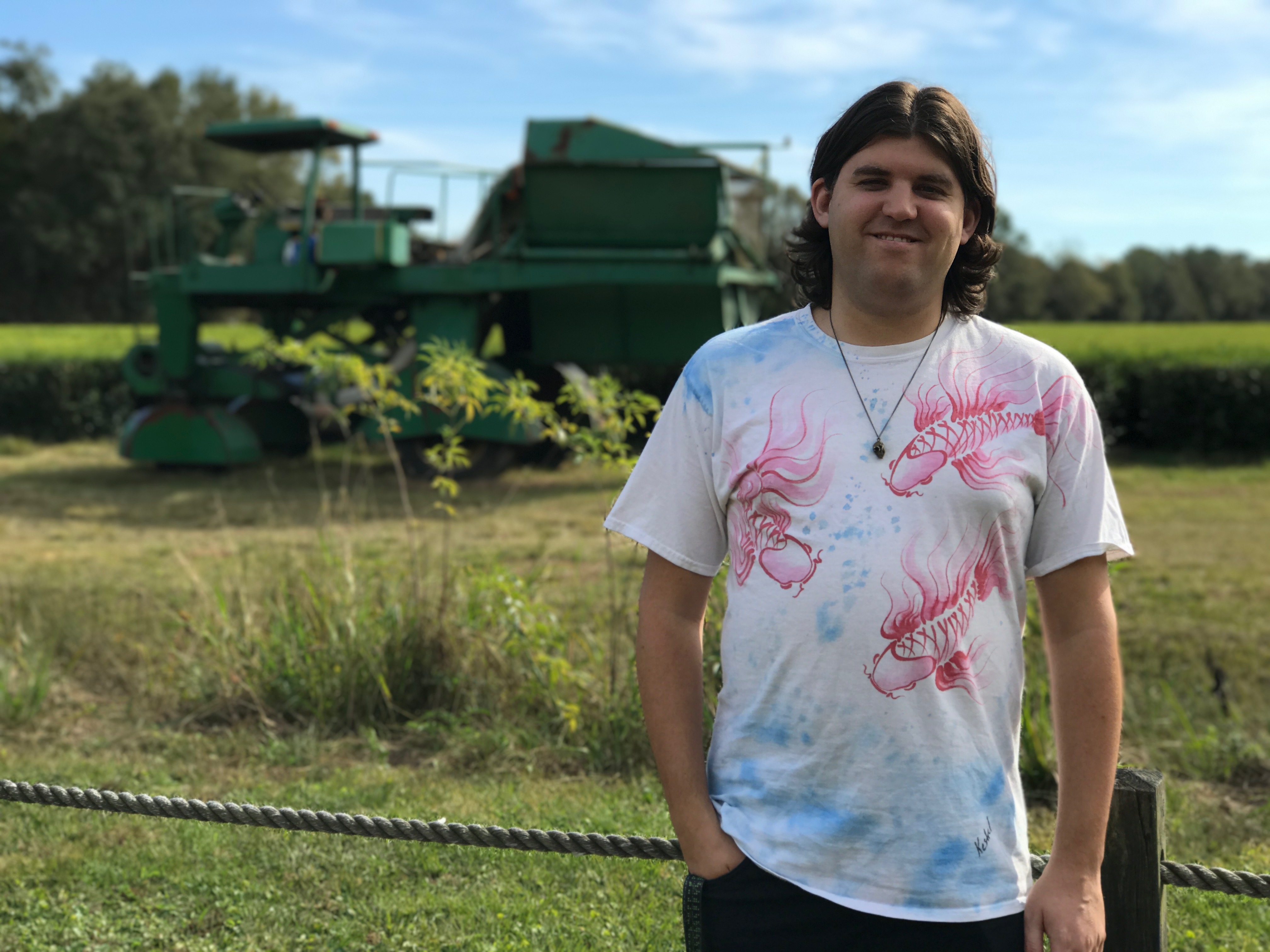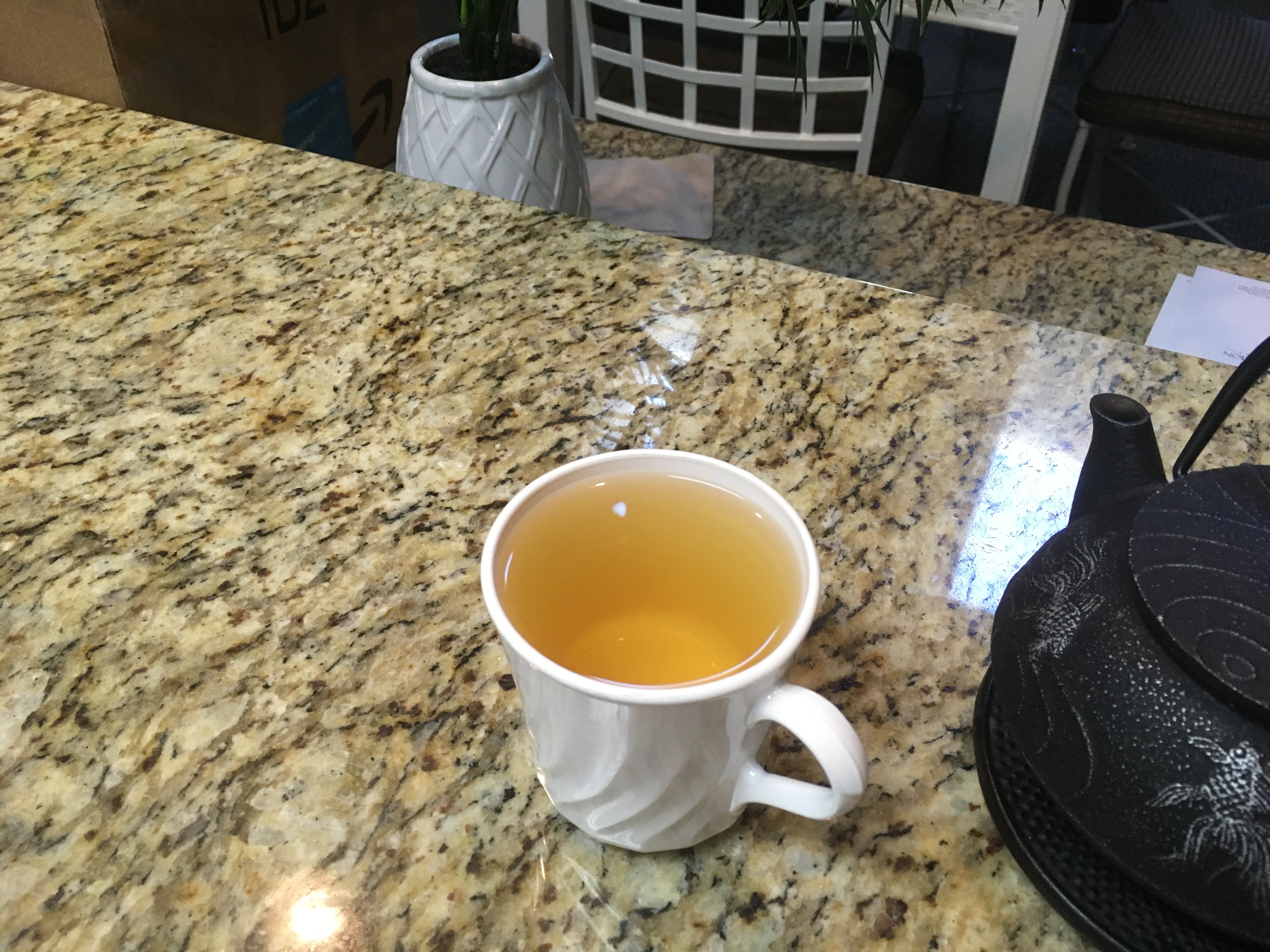I spent this past week in Myrtle Beach, South Carolina with my brothers and in-laws for Thanksgiving. We'd chosen Myrtle Beach as a "meet-in-the-middle" option since half of us are in Florida while the other half are in Pennsylvania or New York. Most of my time was spent chilling with family. But, being a huge fan of tea, I couldn't pass up an opportunity to visit the Charleston Tea Plantation! So, last Wednesday, I drove 3 hours south to get my tea fix.
The Charleston Tea Plantation bills itself as the "only tea plantation in North America". I'm not sure what the criteria is for being a "plantation", but I'm pretty sure this is now, and may always have been, false. Regardless, the plantation is obviously the most profitable one in North America, so I just tried to ignore the over-hyped marketing.

When you get there and park, the first place you'll go is their gift shop. From here, you can go on a factory tour (the gift shop is actually in the factory, so you literally just walk through the shop and into the production area), pay for a $10 trolley tour of the grounds (which we did), buy any merchandise you might want, and/or ask the staff any questions you might have. You can also sample their (currently 8 total) varieties of tea.
Unfortunately, whomever is in charge of brewing the tea you can sample obviously does not drink hot tea. The 5 varieties of American Classic Tea I sampled (Island Green, Island Green Mint, Cinnamon Spice, Charleston Breakfast, and Earl Grey) were all ridiculously over-steeped and incredibly astringent. Drinking the stuff was seriously revolting. At least the iced teas (Rockville Raspberry, Cinnamon Spice, Plantation Peach, and Charleston Breakfast with and without sweetener) weren't ruined and were able to show me that the tea could be tasty.
We took the trolley tour first, which was very relaxing. The trolley took us around the grounds of the plantation and explained about the history of the plantation. The guide also explained how the tea is cultivated.
There are apparently a very large number of different varieties of tea on the plantation. These are planted in certain patterns (alternating or in blocks). They then use a large harvester to shear the plants at a certain height one row at a time. So, unlike the Chinese and Taiwanese teas I'm used to, American Classic Tea is a blend of different varieties of Camellia sinensis - not leaves from a single variety of plant.
Toward the back of the plantation, we stopped at the greenhouse to see the next generation of plants. These were actually not supposed to still be in here! Hurricane Matthew, however, prevented them from being planted early enough for them to be safe from winter frost. We briefly met Bill Hall, the owner, and then went inside for an explanation of how they use a number of automated systems to keep the fledgling plants happy.

After touring the greenhouse, we hopped back in the trolley and looped back around to the gift shop. On the way, we heard more about the business of the plantation and passed by Bill Hall's newly built house. At the end of the tour, we were dropped off by the Green Giant - the plantation's harvester that I mentioned earlier.

After walking around the grounds some, we went inside and did the self-guided factory tour. Unfortunately, this being late November, the factory itself wasn't actually producing any tea while we were there. But, we still got to see the machinery and the process was explained in detail by a few looping videos playing on screens hanging from the ceiling.
The overall process for processing their tea is the exact same as you would expect, but obviously with automation instead of artisanal care. See this page if you're not familiar with traditional tea processing. I thought their adaptations were incredibly interesting:
- Withering - They need to remove a large amount of the moisture from the leaf before they can continue processing. They use a large "Withering Bed" for this that tries to dry the tea evenly with heated, dry air while slowly moving it off to the next step.
- Tearing - At the end of the withering process, the tea leaves are funneled into a rotating series of blades called a rotovane. This shreds the leaves up, which ruptures the cell walls in the leaves. This is done regardless of what type of tea they are producing (which I find unfortunate for their greens).
- Oxidizing - Once the tea leaves are torn, if it's a black tea, they'll load the leaves onto a tall machine that looks a lot like a rotating ladder. The leaves are then dropped into another bed, the "Oxidization Bed", and spread out evenly. They're slowly moved toward the next step while oxygen mixes with the chlorophyll from the now-broken cell walls for black tea. For green tea, they presumably speed this up significantly so that the tea doesn't oxidize.
- Fixing - The tea is next funneled into a drying room where heat is applied evenly to dry the leaves out and prevent more oxidation from occurring.
- Filtering - Because the tea is harvested by a machine, rather than being hand-picked, there's a bunch of unwanted plant fiber that is left with the tea from plant stems. Once the tea is fixed and ready for packaging, the last step is to remove all this extra plant fiber. This is done by first passing the tea through a sieve to remove large pieces of fiber, then passing what's left through another machine that uses static electricity to remove the lighter fiber from the heavier leaf pieces.
Once the tea is finished being filtered, they package it all up! The whole process is completely automated and looks like it takes less than a day to process everything they pass through it (withering takes the longest of the steps). As an engineer, I have to admit their solution for automating the entirety of tea production seems pretty solid.

Before heading back to Myrtle Beach, we took a side trip to the Angel Oak. This is a ~500 year-old Southern Live Oak located on Johns Island that is the largest tree east of the Mississippi River. I have to admit, I didn't quite understand how big the tree was going to be... It's massive!

At the plantation, I purchased a tin of the Island Green and Charleston Breakfast loose-leaf tea. We wasted no time brewing up some of each when we got back. As I mentioned before, I've been mostly experimenting with Chinese and Taiwanese teas over the past 2 years. I figured these two would taste closer to less artisanal offerings from India or Ceylon, but I frankly don't have a lot of experience with more "western" teas. As a result, I didn't quite know what to expect.
Unlike my experience in the plantation's gift shop, I found both teas to be quite good! Neither of them had the subtleties of the oolongs I've been sampling over the past few months. The leaves also don't re-steep particularly well (possibly because they're processed with CTC?). But, they're absolutely drinkable.
The Island Green reminds me a little of a Japanese Sencha because it's fairly grassy. It also has some strong vegetal flavor as well, though. Unfortunately, none of the more fruity or floral flavors I've come to appreciate from Chinese Jade Snail Tea are present.
The Charleston Breakfast is, through and through, a western black tea. I don't drink a lot of Irish or English Breakfast blends, but this definitely had a similar flavor profile. It was sweet and fairly fruity, vaguely floral, and definitely had chocolate and nutty flavors hidden in there somewhere. Despite the marketing on the tin saying it's "full-bodied", I actually found it to be a little lighter and more complex than I'd expected. I found myself enjoying it far more than I thought I would.

To wrap up, here's a bonus picture from Myrtle Beach:



